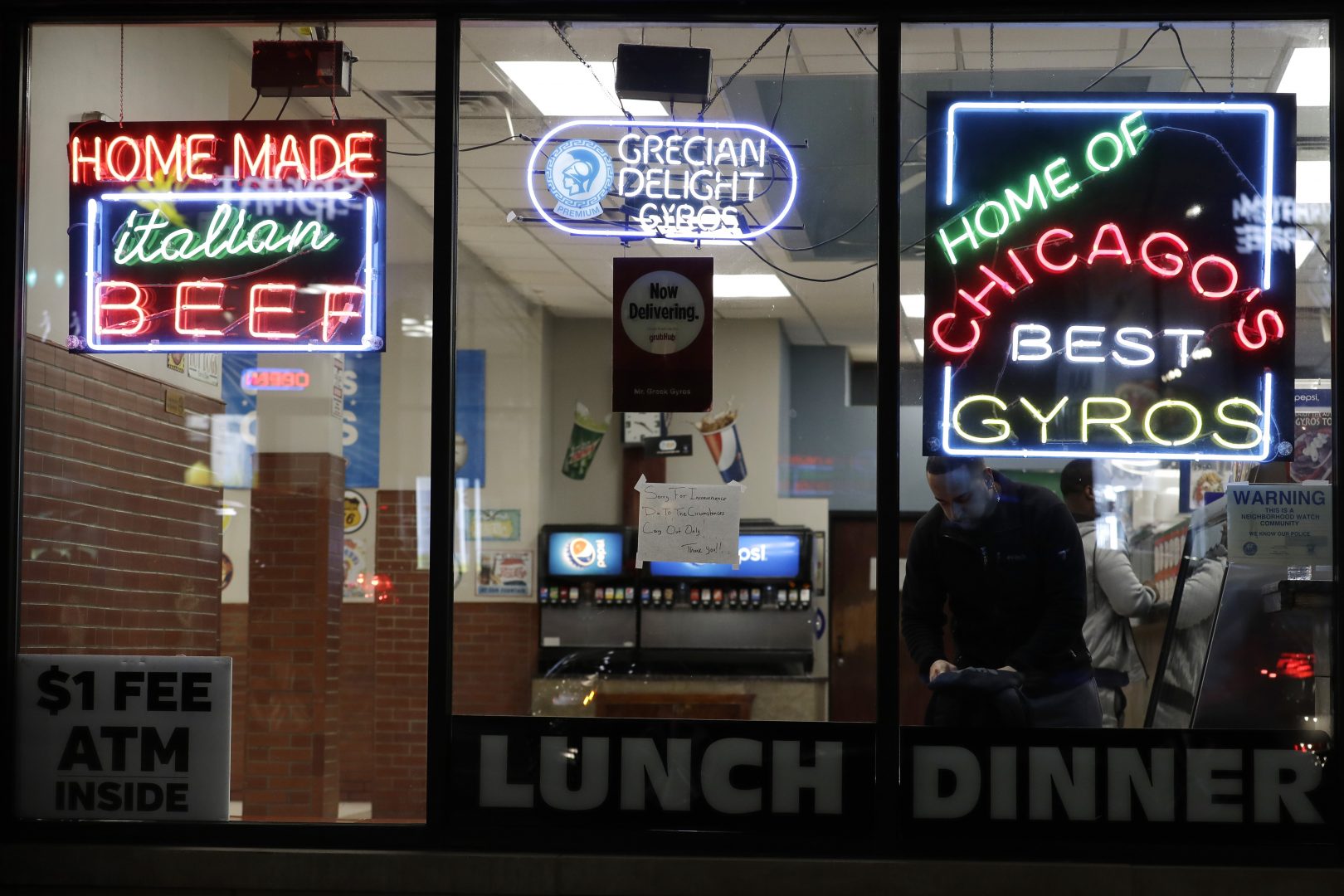
Nam Y. Huh / AP Photo

Nam Y. Huh / AP Photo

Nam Y. Huh / AP Photo
What you should know
» Coronavirus facts & FAQ
» Day-by-day look at coronavirus disease cases in Pa.
» What the governor’s stay-at-home order means
Thai food and toilet paper. Fish and chips and flour. A bistro box … of local produce.
With their sitdown dining rooms shut down, a growing number of restaurants are expanding into groceries, as a source of much-needed cash in this crisis.
For customers, it’s an opportunity to grab a few necessities without needing to brave a crowded store (or fight for a coveted grocery delivery slot.) And while your local supermarket may be all out of flour, local restaurants probably have plenty.
That’s because in many cases, different supply chains provide food to restaurants than to grocery stores.
“There are some players that sell food only only for restaurants — which means they have big bags of food, they don’t have a brand,” says JP Frossard, a consumer foods analyst at Rabobank. “The distribution is different. The type of product may be different.”
Take flour, a hot commodity as people sheltering at home pick up baking projects. Grocery stores sell a lot of 5-pound bags of flour, and are having trouble keeping shelves filled right now. Meanwhile, restaurants and bakeries have easy access to flour — it’s just in 50-pound bags.
In this pandemic, people are eating at restaurants less, and ordering from grocery stores more. But it can be difficult to pivot the food supply accordingly — you can’t just plop a 50-pound bag of flour onto a grocery store shelf. (A restaurant, on the other hand, can be flexible and fill up a Ziploc bag for customers.)
And it’s not just packaged dry goods. Produce that was meant for restaurants now needs to find new buyers, which is challenging to do quickly and in large volumes. As a result some food is being left to rot in fields.
Restaurants are trying out a new answer. Too many tomatoes? Add them to the online ordering system.
Sysco, one of the country’s largest restaurant suppliers, is offering advice and supportfor restaurants that want to start selling groceries. “Sysco has plenty of inventory and products to help your customers meet the demands and needs that are lacking from their local grocery stores,” the company writes, while emphasizing the importance of social distancing behind the scenes at these pop-up stores.
Pivoting to meet this new need is a genuine public service, Frossard says. It’s also a boost for Sysco’s bottom line, and a source of income for restaurants.
But it’s not a huge moneymaker, he notes; certainly not enough to replace the business restaurants are losing right now.

Ordering groceries from a local restaurant is one way to skip a trip to the grocery store. Max Posner/NPR
“It’s a way to help us kind of stay afloat,” says Jennifer Dobbertin, the owner of Tenko Ramen in San Antonio, Texas. “It’s an extremely struggling time for restaurants.”
The ramen shop has started adding grocery items to the menu. Dobbertin doesn’t have a ton of space for inventory, so it’s a challenge to figure out what they can sell, but she says she’s been having fun with it. “One of my dream jobs is to be a buyer for a grocery store,” she said.
Scroll past the ramen on her online menu and you’ll find milk with this description: “social distancing is udderly necessary.” Gala apples: “The only gala you’ll be going to anytime soon.” Cabbage: “are you desperate enough to buy a head of cabbage yet?” (Dobbertin actually loves cabbage, but she says she’s aware she’s in a minority there.)
Other restaurants are preparing boxes of produce for pickup at specific times, or urging customers to call in and see what kinds of dry goods and produce might be available.
Here in Washington, D.C., a reporter recently picked up fish and chips from a British pub called Alibi, with a side of flour, baking soda and a bottle of bourbon. And a visual journalist placed a delivery order from Julii, in Bethesda, Md., for a chicken sandwich and some paper towels.
And the trend has hopped from mom-and-pop shops to at least one big chain. Panera Bread is now offering vegetables and milk alongside its baked goods.
The days of journalism’s one-way street of simply producing stories for the public have long been over. Now, it’s time to find better ways to interact with you and ensure we meet your high standards of what a credible media organization should be.